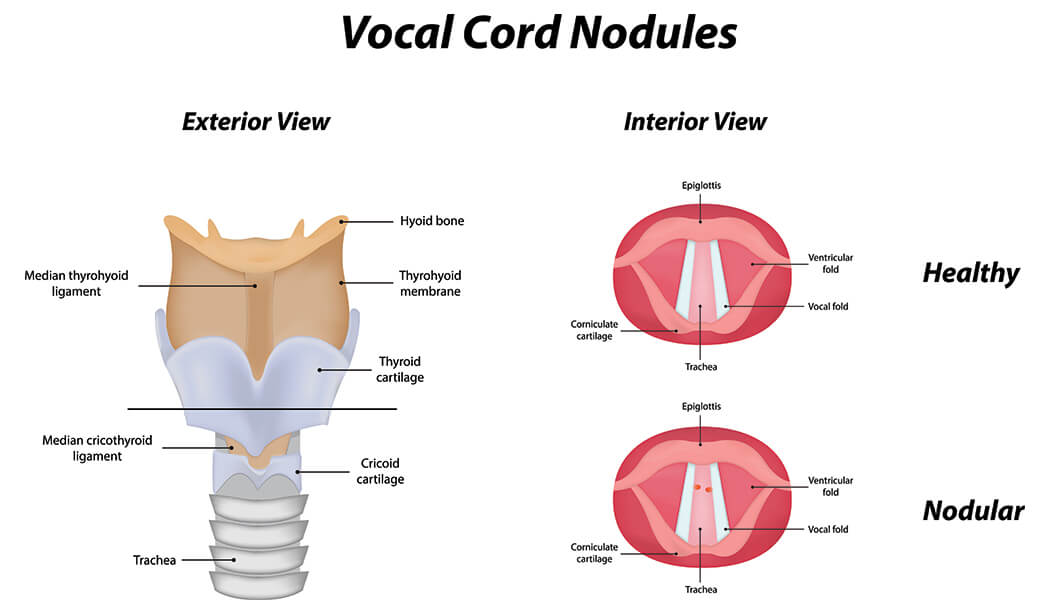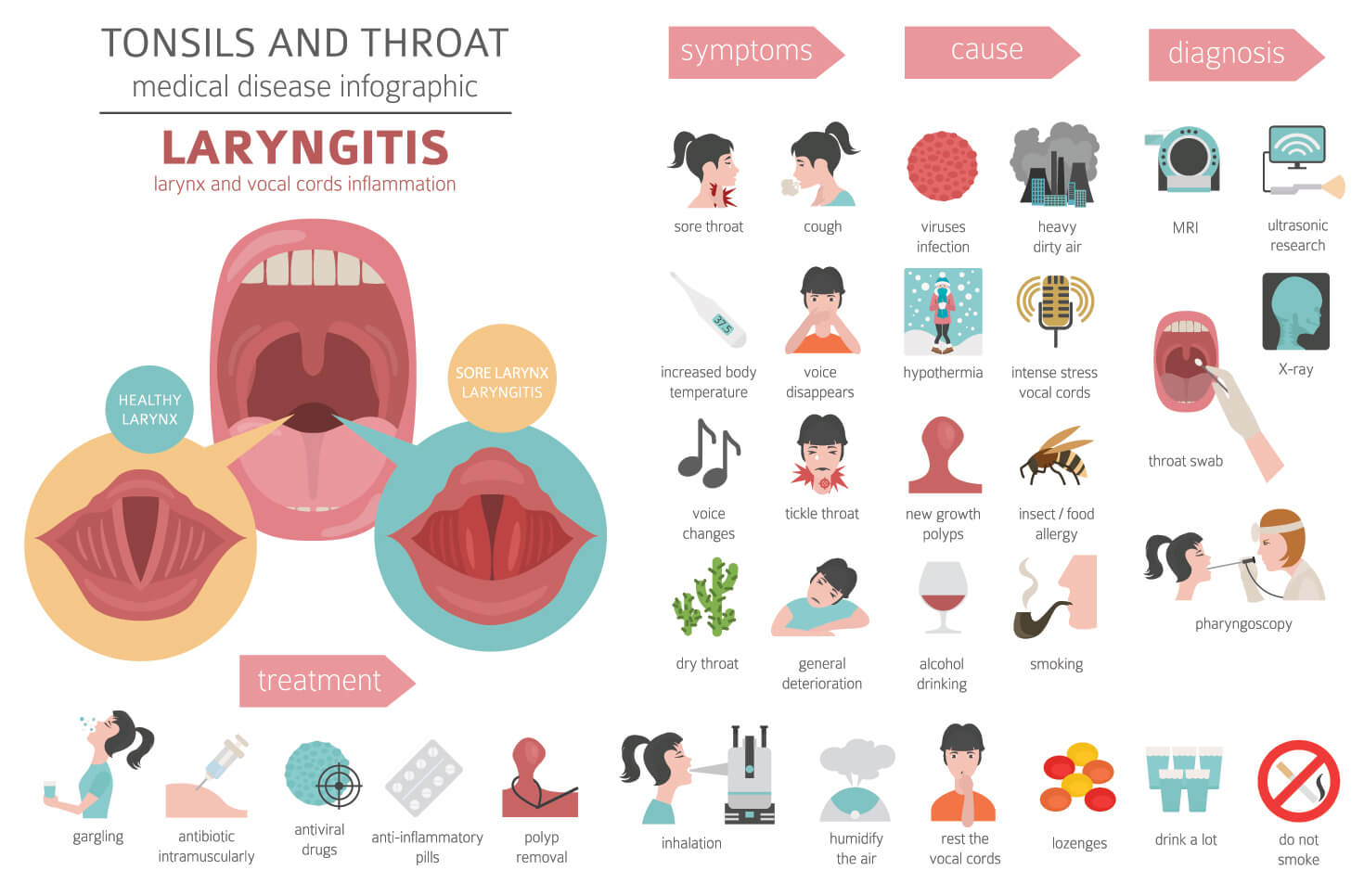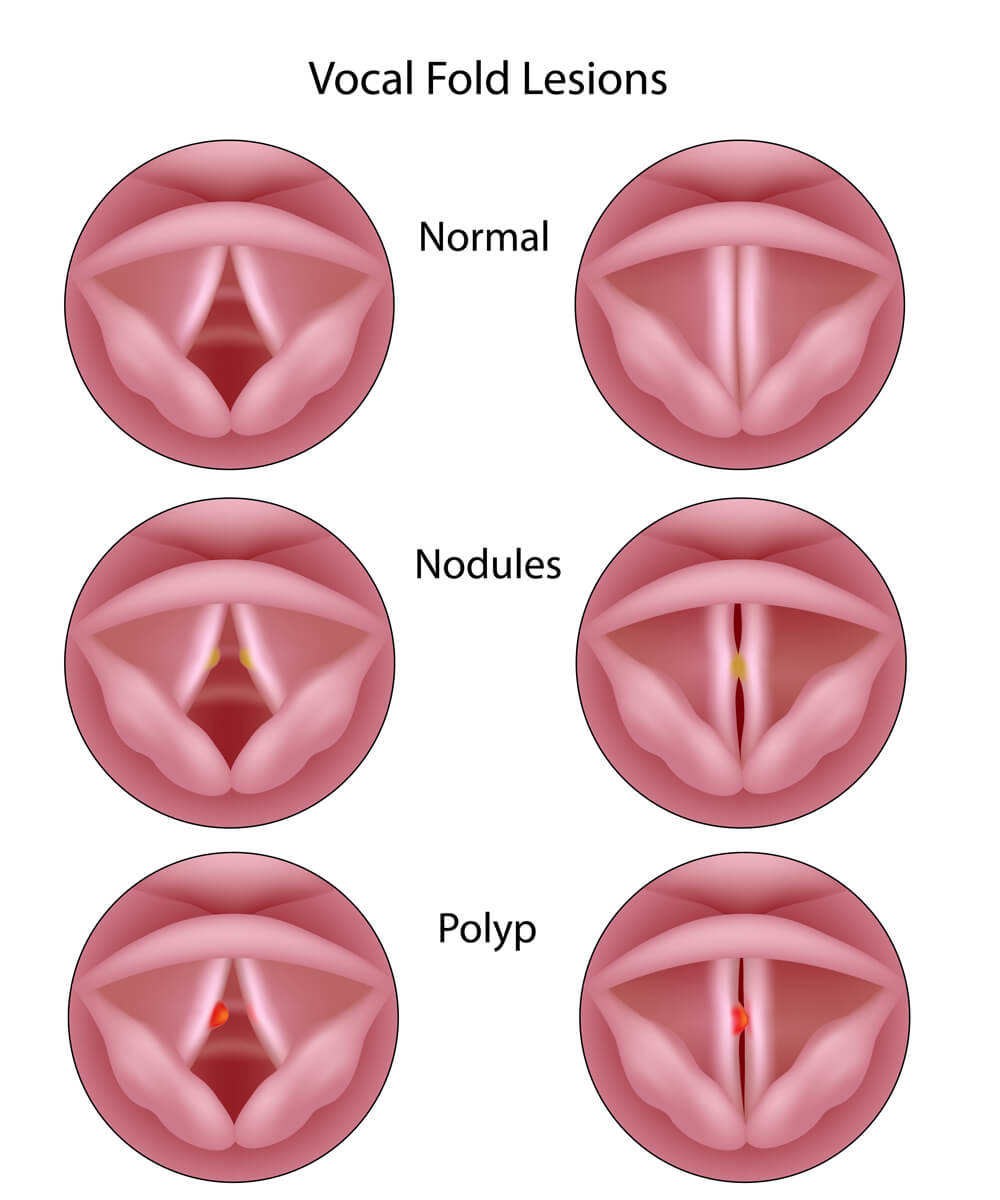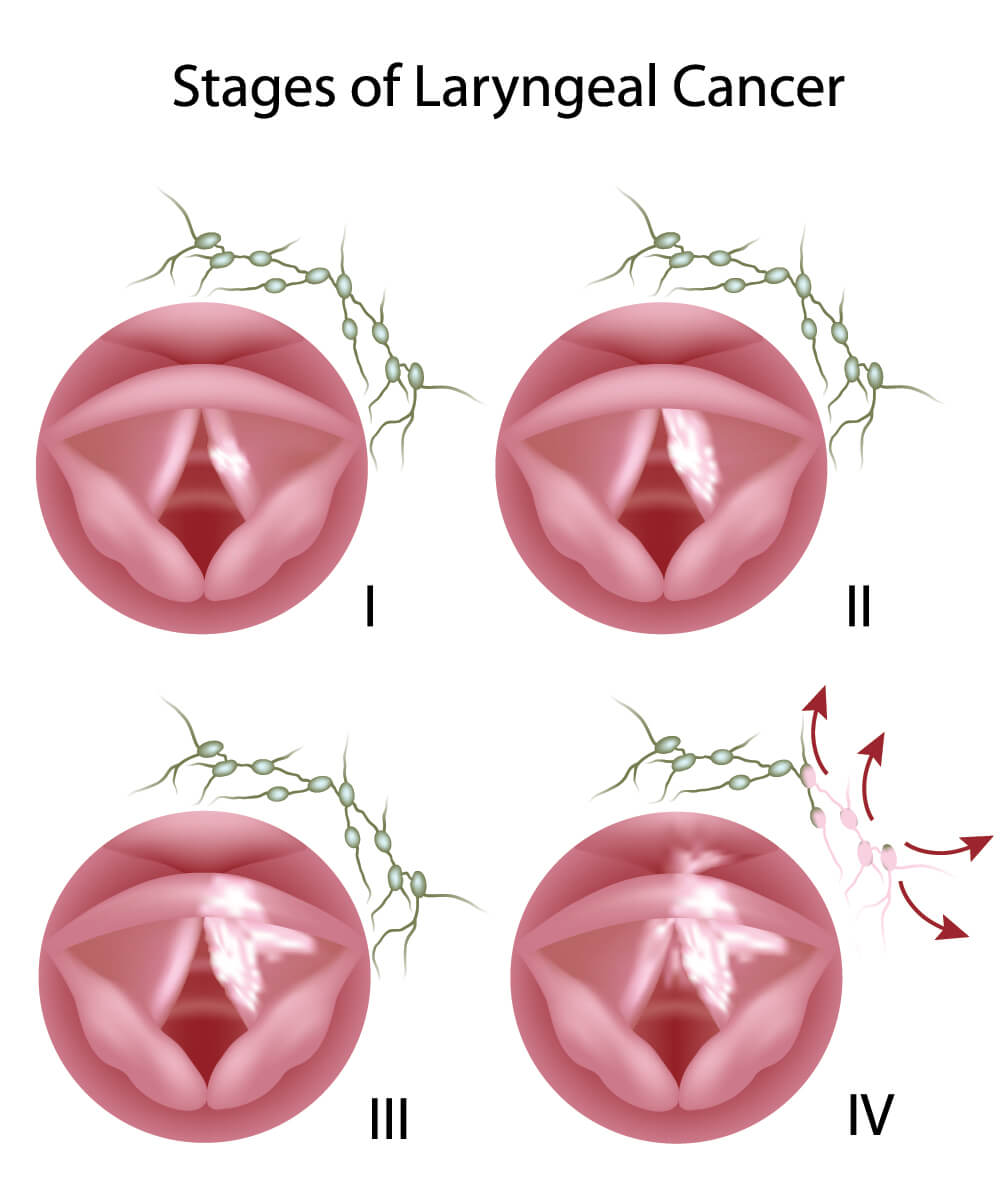What is laryngology?
Laryngology deals with diseases and dysfunction of the larynx that is the voice box. Larynx contains vocal cords which causes production of sound, helps in swallowing and protection of the airway.
What are some of the diseases that affect the larynx?
There are many conditions that can affect the larynx, including:
- Benign (non-cancerous) vocal cord lesions.
- Cancerous or precancerous lesions.
- Infectious or inflammatory conditions.
- Autoimmune conditions.
- Neurologic conditions.
- Airway conditions.
- Vocal cord motion abnormalities.
What other factors can affect the larynx?
The vocal cords can also be affected because of other surgical procedures, such as thyroid, cardiac, thoracic, spine, and vascular surgery. Placement of a breathing tube during anesthesia or hospitalization can also sometimes be related to problems in the larynx.
The vocal cords can also be affected because of other surgical procedures, such as thyroid, cardiac, thoracic, spine, and vascular surgery. Placement of a breathing tube during anesthesia or hospitalization can also sometimes be related to problems in the larynx.
Eventually, frequent vocal abuse and misuse can cause changes in vocal function and result in hoarseness. (Hoarseness that lasts longer than 2-4 weeks without explanation should be evaluated by an otolaryngologist.)
Disorders caused by abuse, misuse, or overuse include:
- Laryngitis: An inflammation or swelling of the vocal cords.
- Vocal cord nodules: Small, benign, callus-like, inflammatory lesions on the vocal cords. Nodules are among the most common noncancerous vocal lesions. Professional singers and people who have a lot of vocal demands (salespersons, teachers) are often at greatest risk for development of these lesions.
- Vocal cord polyps: These vocal cord lesions are typically post-traumatic (caused by an injury) or inflammatory in nature. They result from a vocal cord injury from heavy vocal demand or persistent coughing. Patients who smoke also have a tendency to develop polyp-like changes on the vocal cords.
- Vocal cord hemorrhage: A sudden loss of voice, usually due to screaming, shouting, or other strenuous vocal tasks. In a hemorrhage, one or more of the blood vessels on the surface of the vocal cord rupture, and the soft tissues of the vocal cord fill with blood. It is treated with voice rest until the hemorrhage resolves.
- Professional voice disorders: While this title implies that a person must be a professional speaker or singer, anyone who uses their voice for work is really a professional voice user. Professions that are at especially high risk include teachers, counselors, customer service representatives, and sales representatives.
- Spasmodic dysphonia: This is a rare neurologic condition of the larynx that involves the involuntary muscle contraction (tightening) of specific muscles within the vocal cords or larynx. This results in a voice that is strained or strangled or intermittently breathy. This is difficult to diagnose for most non-specially trained clinicians and is best treated in a tertiary care voice center.
- Laryngeal papillomavirus: This is a chronic (long-lasting) viral infection in which benign, wart-like tumors grow inside the larynx or vocal cords, or the respiratory tract leading from the nose into the lungs. The lesions, which are caused by the human papilloma virus (HPV), may grow very quickly and frequently reappear despite sustained treatment. This may cause breathing problems if the patient's airway is blocked or, more frequently, hoarseness if the lesions are on the vocal folds. Laryngeal papillomavirus can affect adults, children, and infants.
- Vocal cord paralysis or vocal cord hypomobility: This condition occurs when one or both of the vocal cords in the larynx do not open or close properly. Vocal cords enable people to talk when air held in the lungs is released and passes through the cords, causing them to vibrate and make sounds. In addition to affecting speech, vocal cord paralysis can cause coughing, a feeling of phlegm in the throat, difficulty swallowing, and shortness of breath while talking. Although the main symptom tends to be a breathy and weak voice, symptoms of vocal cord paralysis can be more significant.
- Vocal cord motion disorders: These can be caused by surgery to the thyroid gland, vascular surgery, thoracic surgery, spine surgery, prolonged or traumatic placement of a breathing tube, or a viral infection.
- Laryngopharyngeal reflux (LPR): This condition is also called heartburn, acid reflux disease, or gastroesophageal reflux disease (GERD). Gastroesophageal reflux is a burning sensation in the chest that may occur after eating, bending, stretching, exercising, and lying down. GERD occurs when the contents of the stomach travel back up into the esophagus. This can happen when the lower esophageal sphincter (LES) valve, which controls the passage of food from the esophagus to the stomach, fails to close correctly. This condition has more classic heartburn symptoms. Reflux can affect the larynx and cause more atypical symptoms such as coughing, hoarseness, inflammation, and sore throat. In these cases, it is referred to as laryngopharyngeal reflux (LPR). LPR may be associated with frequent coughing, throat clearing, excess mucus and phlegm, and the sensation of a lump in the throat.
- Laryngeal cancer: Though many growths that affect the larynx are non-cancerous, cancerous tumors can also grow in the larynx. The inner walls of the larynx are lined with cells called squamous cells. Almost all laryngeal cancers begin in these cells and are called squamous cell carcinomas. If not caught early, laryngeal cancer can metastasize (spread) to nearby lymph nodes in the neck. Smokers are at higher risk than non-smokers for cancer of the larynx. The risk is even higher for smokers who drink alcohol. Fortunately, if caught early, laryngeal cancer is very treatable.
- Laryngeal stenosis: This condition is a narrowing of the vocal cord airway, either from scarring or bilateral (two-sided) vocal cord immobility (inability to move) that can cause problems with breathing. It can be caused by a number of conditions, including autoimmune or inflammatory disorders such as polyangiitis with granulomatosis, traumatic injuries from prolonged intubation, iatrogenic conditions (caused by medical treatment) such as thyroid surgery, malignant (cancerous) conditions, progressive neurologic degenerative conditions, or rare viral infections.
- Dysphagia: People with this condition have difficulty with swallowing. Some people with dysphagia may be unable to swallow solid foods, liquids, or even saliva. This can lead to the patient becoming malnourished, since he or she is unable to take in enough calories. Dysphagia can also lead to serious infections when poor swallowing causes food to get trapped in the lungs or outside the esophagus. Dysphagia happens when the larynx does not close tightly during swallowing and when the pharynx (throat) does not move food to the esophagus in a coordinated or effective way. Dysphagia is often seen in patients who have suffered strokes, but can also occur after neck surgery or after radiation treatments for head and neck cancer. They can also be a significant component of progressive neurologic conditions. Swallowing conditions can be quite complex and typically benefit from a multidisciplinary (team) approach involving otolaryngology, gastroenterology, and speech pathology.
How are diseases of the larynx diagnosed?
Diseases of the larynx are usually diagnosed by a laryngologist or otolaryngologist. He or she will first perform a physical examination which includes a scope o visualize the larynx and throat. Depending on your symptoms, other tests may be needed. These include imaging studies, biopsies, or an additional endoscopic examination.
How are diseases of the larynx treated?
Treatments for conditions that affect the larynx vary depending on your diagnosis. Treatment for conditions caused by vocal abuse, misuse, or overuse may be as simple as resting the voice. Voice or singing therapy might also be recommended. This is performed by a speech-language pathologist.
Surgery, radiation therapy, chemotherapy, or a combination of these treatments may be used to treat laryngeal cancer. Surgery may also be required to treat nodules, polyps, or cysts. Treatment for conditions of the larynx and vocal cords are highly individual, depending on your condition, age, and profession. Your doctor will take all of these into account to create a personal treatment plan.
What can be done to prevent diseases of the larynx?
Quitting smoking and cutting back on drinking alcohol can help prevent laryngeal cancer.
Taking proper care not to strain the voice through excessive use or misuse can prevent conditions such as polyps and nodules. This is especially important for singers or people such as teachers or lawyers, who spend much of their day speaking. Taking time to rest your voice, maintain physical fitness, and control irritating factors such as allergy or reflux can help a good deal in preventing these conditions.
It is important to note that most conditions affecting the larynx are treatable if you seek medical attention when you first notice your symptoms. Failing to do so may mean permanent damage to the larynx and voice.
Microlaryngeal surgery
Microlaryngeal surgery is minimally invasive surgery for laryngeal lesions.
Anesthesia: done under general anesthesia to prevent gagging or breathing problems.
Procedure
Microlaryngeal surgery is performed through a laryngoscope, a thin lighted tube with a camera on the end that allows the doctor to visualize the area with great precision. Once the laryngoscope is inserted through the nose into the throat, and the lesion is located, the surgeon removes the abnormal growth using tiny surgical tools that have been threaded through the laryngoscope to the affected site. Because this technique permits the surgeon to perform the operation with great accuracy, only the damaged tissue is excised. The surrounding area remains unharmed.
Postoperative
The patient is monitored for several hours before returning home. Most patients experience some level of discomfort after the surgery, but often respond well to over-the-counter pain relievers. If the pain is more significant, a corticosteroid may be prescribed for short-term use. Acid reflux medication may also be recommended to ensure that stomach acid does not irritate of the healing tissue. Complete voice rest is required during the initial weeks following surgery. Postoperative voice therapy is typically prescribed to assist in improving and maintaining voice quality.
Why choose us??
Alvura which is renowned for its state-of-the-art acclaimed services, offers you affordable and latest laryngeal ailments. We provide you the best and most recent surgical technology. We individualize each and every patient’s need and treat them accordingly. We want you to be comfortable and reassured about every before and after facts. Request a consultation right: Book an appointment



